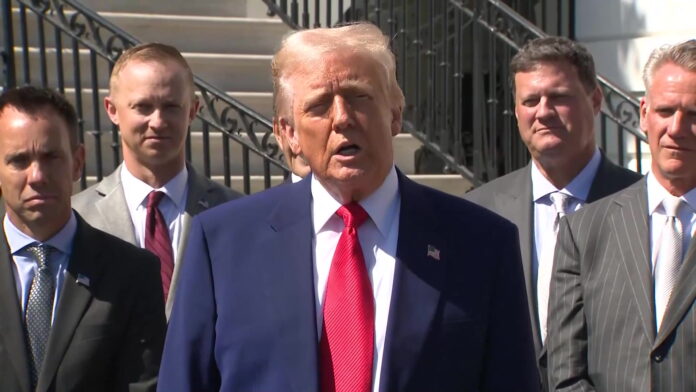On April 13, 2025, President Donald Trump announced that no nation would escape his tariff policy, even as he introduced a 90-day suspension for some levies. In a Truth Social post, he stressed that countries exploiting trade imbalances, especially China, would face continued scrutiny. Global markets, rattled since his April 2 tariff declaration, plunged before partially recovering after last week’s pause on the steepest rates.
Most nations now face a 10 percent baseline tariff for nearly three months, while China contends with US duties soaring to 145 percent, met by Beijing’s 125 percent counter-tariffs on American imports.
Trump’s administration expressed plans to negotiate trade agreements, though specific terms the president might accept remain unclear. He maintained that trade deficits arise from unfair practices, imposing tariffs even on countries where the US holds a trade surplus.
On Friday, Trump granted exemptions for Chinese-made semiconductors and electronics to prevent sharp price hikes for US consumers on goods like laptops and smartphones. On Sunday, he clarified these items still face a 20 percent tariff under a different category, rejecting notions of softened policy.
China’s Commerce Ministry labeled the exemptions a small step, pressing for a complete end to Trump’s tariff strategy. Further tariffs targeting electronics critical to national defense networks are expected soon, with Trump promising detailed plans on Monday. Commerce Secretary Howard Lutnick suggested that semiconductor tariffs could take effect within one to two months while noting pharmaceuticals might be spared from measures designed to eliminate trade imbalances.
The White House remains optimistic about securing a deal with China, though US officials indicated Beijing must make the first move. Trade Representative Jamieson Greer, appearing on CBS, confirmed that no talks are scheduled between Trump and Chinese leader Xi Jinping.
As China strengthens ties with Southeast Asian nations like Vietnam and Malaysia, Trump’s tariff policies disrupt the US economy, driving down consumer confidence, weakening the dollar, and drawing criticism from prominent Wall Street supporters. Despite this, the administration claims success, noting that numerous countries have begun trade talks to secure agreements before the 90-day reprieve expires. Greer emphasized relentless efforts, with teams working tirelessly to exchange proposals and feedback with global partners.

